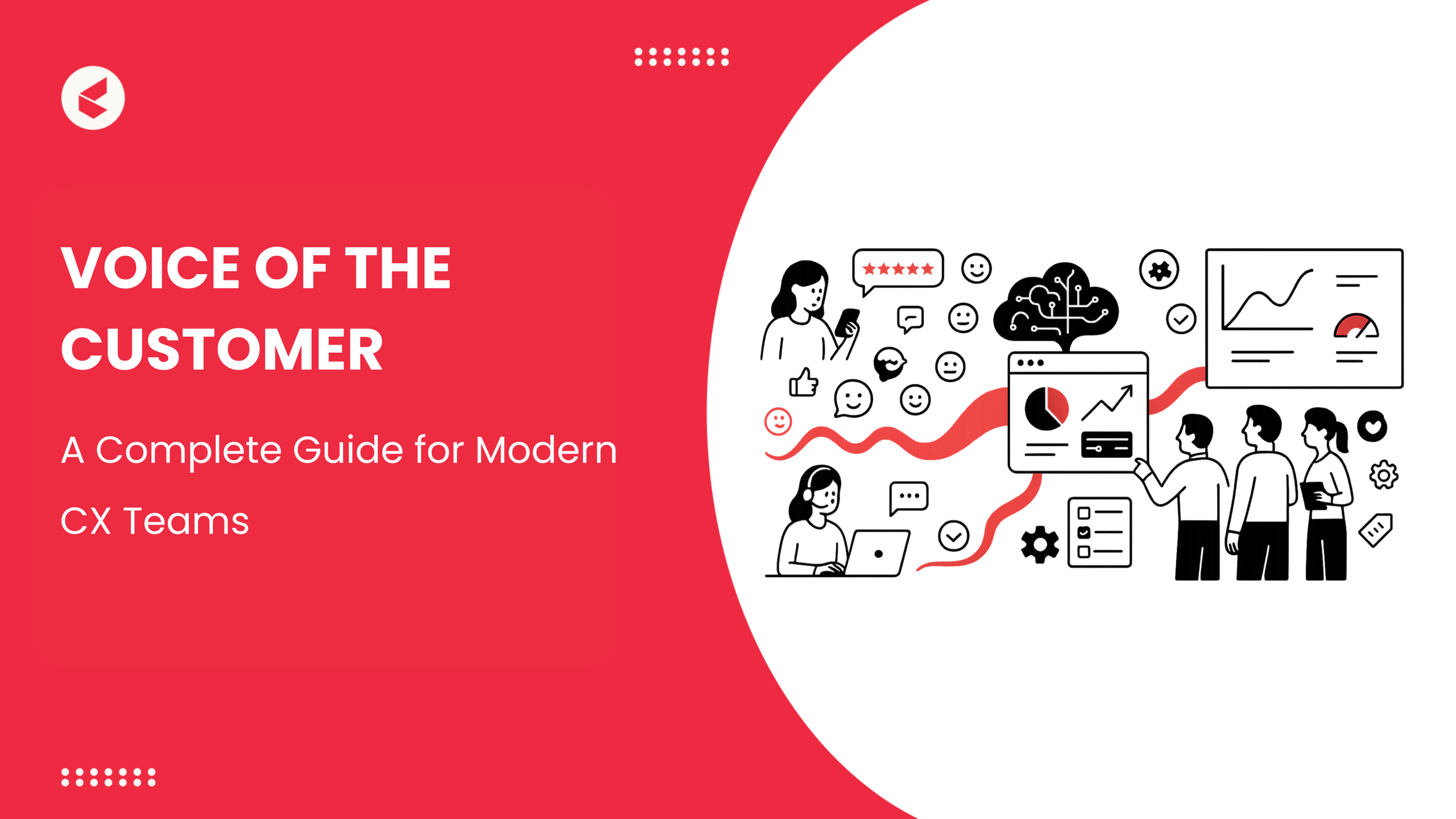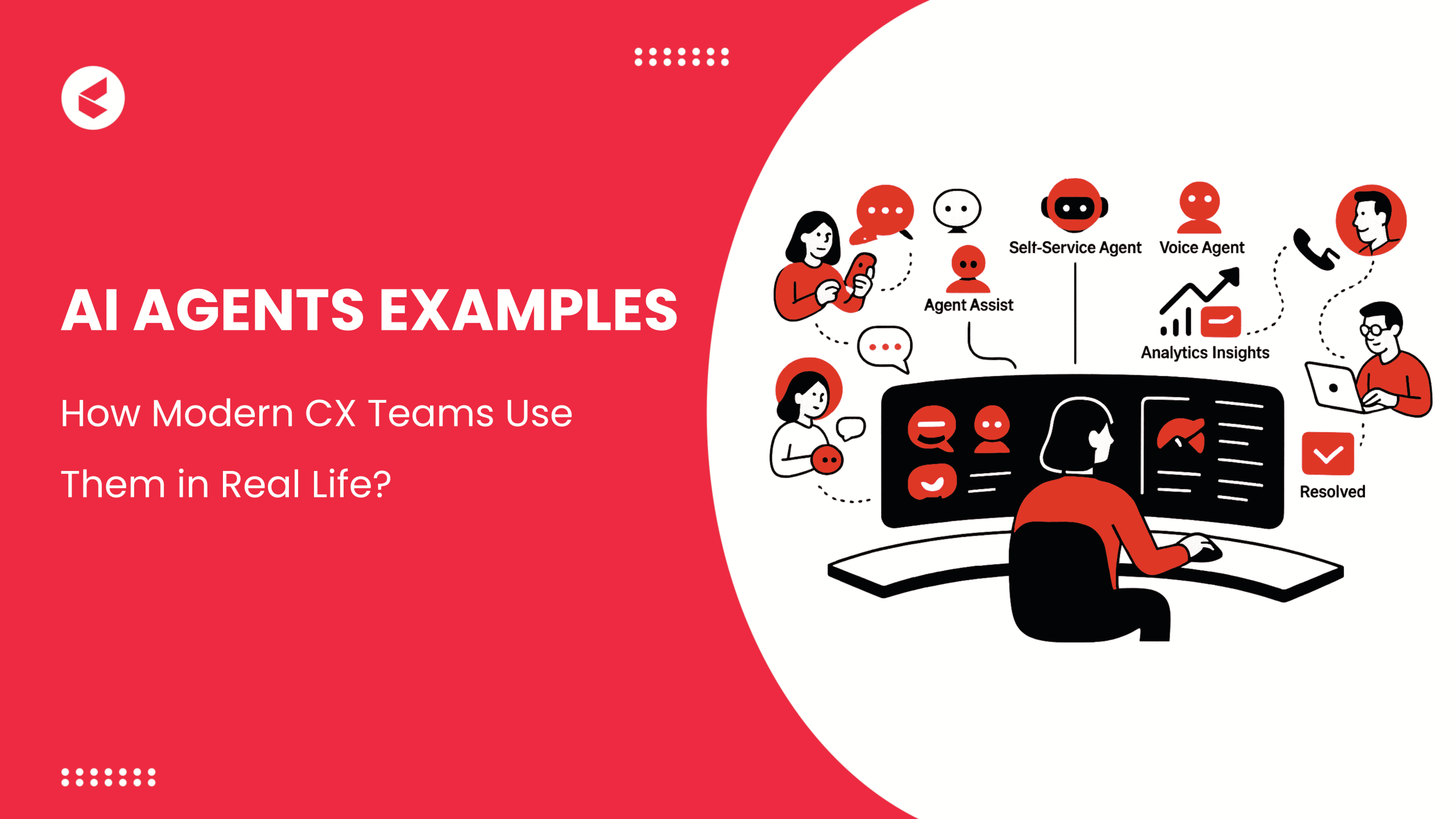The last time Priya contacted customer support, she spent 12 minutes re-explaining an issue she’d already discussed twice. Different agent, same story. Similar to several customers, she departed feeling ignored and unappreciated.
According to Gartner, 31% of Gen-Z and 30% of millennials will abandon their customer experience journeys if they don’t find answers after contacting support agents.
Situations like this happen regularly.
Customers anticipate uniform interactions among departments; however, many businesses fail to deliver. Conversations are siloed across emails, chats, and calls. Context gets lost, and with it, the opportunity to build trust.
The real problem isn’t the technology itself. It’s the absence of memory. Without a long-term view of the customer journey, your AI is simply guessing. And your support feels more robotic than human.
In this blog, we’ll explore how solving the memory problem transforms customer support from reactive to truly relational.
The Cost of Forgetting
When your AI and agents lack memory, context disappears, and conversations become repetitive. The result is a fractured customer experience where trust quickly erodes.
Here’s what happens when long-term context is missing:
Customers:
- Repeat themselves: Every session feels like starting over.
- Feel ignored: Prior issues are forgotten, even if unresolved.
- Lose trust: Inconsistent answers create frustration and confusion.
Your team:
- Agents waste time: Without conversation history, even simple issues take longer.
- Bots fall short: Automated systems can’t connect dots across past interactions.
- Escalations increase: Customers demand human support more frequently.
For your business:
- Handle times rise: More back-and-forth means longer resolutions.
- CSAT drops: Customers penalize poor service with lower satisfaction ratings.
- Churn spikes: According to PwC, 32% of customers will leave after one bad experience.
Now multiply this by thousands of conversations a day. The impact is significant. Customers expect seamless support across all touchpoints. When your systems can’t “remember” them, you’re not just losing efficiency; you’re losing loyalty.
The fix? Equip your support tech with memory that mirrors human recall. That’s how you turn fragmented interactions into intelligent, connected experiences.
What Long-Term Context in AI Really Means
Most bots today operate with short-term memory. They handle one session at a time. Once that session ends, everything resets. That’s short-term context.
But customer service isn’t one-and-done. It’s an ongoing relationship. That’s where long-term context matters.
Long-term context means retaining key information across sessions, agents, and channels. It helps AI remember who the customer is, what they’ve asked before, and what matters most to them.
How long-term memory works in AI:
- CRM stitching: Merges customer information from various tools into one cohesive view
- Entity memory: Records details about the customer, such as name, product, preferences, and keeps them updated
- Conversation embeddings: Uses AI to extract meaning from past chats and store context efficiently
- Persistent user profiles: Maintains history across touchpoints, enabling personalized and faster responses
Where it makes a difference:
- Order follow-ups: AI knows an issue is pending and responds with status updates instead of asking again.
- Recurring complaints: Context-aware bots avoid repeating fixes that didn’t work earlier.
- High-value customers: Their issues are flagged for priority handling automatically.
Without long-term memory, every interaction feels disconnected. With it, you offer seamless service at scale.
In a world where customer expectations keep rising, memory is the new competitive edge.
Techniques to Build Memory into CX Workflows
Retention of information in customer service is not a coincidence. It necessitates the proper combination of systems, processes, and AI frameworks. Here are effective methods to integrate memory into your support processes on a large scale while maintaining privacy.
1. Retrieval-Augmented Generation (RAG)
RAG integrates pre-trained language models with data retrieval from external sources.
- How it assists: It retrieves pertinent previous interactions instantly and produces knowledgeable, situational replies.
- Example: A bot can remember your customer’s previous issue and propose follow-ups depending on the status of the resolution.
- Scalability: Operates with distributed knowledge bases without requiring complete data re-training
- Privacy: Confidential information remains in protected storage; access is based on queries.
2. Integrating CRM with Ticketing System
When your AI connects with your Customer Relationship Management (CRM) and support systems, memory transforms into practical insights.
- Advantages: AI retrieves customer background, including purchases and tickets.
- Example: An agent can view three earlier tickets associated with a delayed shipment, preventing repetitive questions.
- Scalability: APIs facilitate effortless data transfer between cloud platforms.
- Privacy: Access is permitted only to authorized roles, contingent upon customer consent.
3. Knowledge Graphs
Knowledge graphs connect entities such as customers and products to create a web of relationships.
- How it assists: Context remains intact even if customer wording or interactions differ.
- Example: A customer reaching out to support with an alternate email ID is still accurately recognized.
- Scalability: Easy to grow as data increases.
- Privacy: Nodes within a graph may be may be obfuscated or secured.
4. Session Summarization
AI-driven summarizers break down chat and voice discussions into brief, organized notes.
- How it assists: Summaries provide agents with rapid context during transitions.
- Example: A bot provides a brief overview of a 15-minute customer conversation before escalating the issue.
- Scalability: Works across channels such as voice, chat, and email.
- Privacy: Summaries exclude personally identifiable information (PII) when configured correctly.
5. Identity-aware Bots and Agent Assist Systems
These systems verify, track, and tailor experiences based on user identity.
- How it helps: Personalization becomes proactive, not reactive.
- Example: A returning VIP customer is routed to a priority queue with context-aware prompts.
- Scalability: Identity tokens help handle large volumes of queries.
- Privacy: Built-in authentication keeps data secure and compliant.
6. Training LLMs on Synthetic Data
Synthetic data simulates real interactions without using live customer data.
- How it helps: Builds robust long-term memory patterns without breaching privacy
- Example: An LLM trained on synthetic support flows can generalize memory behaviors before deployment.
- Scalability: Enables pre-training across countless scenarios
- Privacy: No real user data used, ensuring compliance and flexibility
By combining these methods, you create memory-aware workflows that deliver consistent and human-like support without breaking compliance or performance.
Measuring the ROI of Persistent Memory
Memory in customer service is a measurable business advantage. When your AI and agents “remember,” support becomes faster, smoother, and more customer-centric. This drives real results across key metrics.
1. Business Outcomes You Can Measure
- Higher first-contact resolution (FCR): Context reduces back-and-forth and resolves issues the first time.
- Shorter average handle time (AHT): Agents spend less time gathering history and more time solving problems.
- Fewer repeat tickets: Long-term memory helps prevent the same issue from recurring.
- Improved customer sentiment: Consistent service builds trust and increases satisfaction.
2. Agent and System Efficiency
- Quicker onboarding: New agents ramp up faster by having access to complete conversation history.
- Reduced cognitive burden: AI assists agents with suggestions based on memory.
- Decreased escalations: Customers feel their concerns are acknowledged, lessening the need for supervisor engagement.
3. Impact on Self-Service
- Better self-service containment: Bots that remember can resolve more complex issues over time.
- Fewer transfers to live agents: When AI has context, customers are more likely to complete journeys digitally.
4. Cost Reduction
- Reducing AHT and ticket volume cuts operational costs.
- Fewer escalations and better self-service raise your Net Promoter Score (NPS).
Persistent memory bridges efficiency and empathy. It helps you serve faster while making every customer feel remembered and valued. That’s a rare win-win in today’s CX landscape.
How Kapture CX Enables Context That Lasts
To deliver truly personalized support, your systems need more than just data; they need memory. Kapture’s AI Agent Suite helps you build that memory across every customer touchpoint.
Kapture combines artificial intelligence with persistent memory to make every conversation smarter. Whether it’s over chat, voice, or tickets, your agents and bots always know the full story.
Here’s how Kapture makes it happen:
1. Unified CRM Stitching Across Channels
Your customer data often resides in silos, including email, chat, voice, and WhatsApp. Kapture stitches this together into one centralized profile. It lets agents and bots access a real-time view of customer context, regardless of the channel.
2. Entity-Aware Bots for Chat and Voice
Kapture’s bots go beyond scripts. They identify customer-specific entities such as product types, order IDs, or prior complaints. This allows them to recall previous issues and provide personalized support with precision.
3. Agent Assist With Real-Time Context Recall
While your agent chats or talks, Kapture surfaces past interactions, summaries, and customer preferences. No more switching tabs or asking customers to repeat themselves. It shortens handle times and increases accuracy on the spot.
4. AI Agents That Decode Every Conversation, Coach Every Agent
Traditional quality checks miss the big picture. Kapture’s AI Agents analyze every customer interaction across all channels, rather than sampling a few chats. They detect context shifts, uncover friction points, and turn insights into real-time coaching.
With features like sentiment tracing and memory-triggered issue detection, problems are solved proactively. Micro-trainings in the agent console instantly boost performance, shifting QA from static scorekeeping to insightful storytelling that explains what happened and what to improve next.
All of these features are designed to scale. No matter the number of conversations, Kapture’s memory-first framework adapts effortlessly without any lag. It additionally respects customer privacy by utilizing encryption and role-based access controls to safeguard personal information.
Why this matters:
Persistent memory isn’t just a technical add-on. It’s the key to building trust, increasing efficiency, and creating consistent, context-rich support experiences at scale.
With Kapture, memory isn’t something you try to build; it’s built into everything you do.
Memory Is the New Muscle in CX
In customer service, forgetting is costly and often unforgivable. Your customers don’t reset after each session. They expect you to remember what they said, what they bought, and what went wrong. When your systems forget, you lose trust, time, and loyalty.
That’s why long-term memory is the foundation for great support. By investing in memory-first systems, you deliver support that feels personalized, not robotic. You cut down on repeated questions, reduce escalations, and let customers move forward, not backwards, with each interaction.
Kapture helps you do exactly that. Our AI Agent Suite is built to remember. From unified CRM stitching to entity-aware bots and real-time Agent Assist, every feature works toward a single goal: sustained, contextual customer conversations.
You don’t just resolve issues faster. You make every customer feel seen, heard, and remembered. Because today, consistency beats convenience. And memory is what makes it possible.
Stop resetting the conversation. Discover how Kapture helps you pick up right where your customers left off!
FAQs
By storing customer histories and conversation summaries, new agents can quickly understand issues, reducing training cycles and boosting first-day productivity.
Yes. Stored context enables seamless support handoffs across global teams, ensuring agents can pick up where others left off, regardless of shift, location, or channel.
Absolutely. It lets you recall last season’s queries, complaints, or buying trends, enabling smarter staffing, proactive engagement, and faster resolution during high-demand periods.













